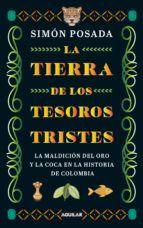
Colombia wants Spain to return its Quimbaya treasure
Colombia demands that Spain return the valuable collection of pre-Columbian artifacts on display in a Madrid museum
A trip to the Museum of America (Museo de América) in the Spanish capital allows visitors to discover the valuable collection of pre-Columbian objects made up of 122 objects, including necklace beads, helmets, necklace pins, crowns, pins, containers, rattles, poporos, pendants, musical instruments, nose rings and ear flares. All of them belong to the so-called "Quimbaya collection," one of the most prized by gold prospects of the last century, and also by the Colombian government, which has been demanding for years that Spain return this valuable collection of pre-Columbian art.
The reason this collection is in Madrid is because it was a gift made by Colombian President Carlos Holguin Mallarino to Spanish Queen Maria Cristina in 1893 as a thank you for the role played by the Spanish crown in deciding the borders between Colombia and Venezuela.
Many of these pieces were saved from Spanish smelting during the conquest of the Colombian territory in the 16th century, when thousands of them were turned into gold ingots exported to Seville, as cited in a report published in La Vanguardia.

In 2017, the Colombian Constitutional Court ruled in favor of returning the Quimbaya collection to the Colombian state. For its part, the Academy of History of the Department of Quindío, in Armenia (the region where the pieces were found in the 19th century), requested their return in a letter addressed to Spanish President Pedro Sánchez.
In response, the Spanish government ruled that the collection is considered an asset of cultural interest in Spain, preventing its sale or export.
The Quimbaya collection was the subject of conversation at the recent meeting in Bogotá between Sanchez and the new president of Colombia, Gustavo Petro. For the moment, there are no expectations for its return to the Latin American country.
The Land of Sad Treasures (La Tierra de los Tesoros Tristes)
For readers interested in this topic, in his new book, La Tierra de los Tesoros Tristes (The Land of Sad Treasures), Colombian writer Simón Posada is inspired by the tragic role of gold and coca in Colombia's history.
RELATED CONTENT
The book stars Coriolano Amador, one of the richest and most eccentric men in Colombia in the 19th century, who acquired a gold object that all Colombians have seen at some time, but few know its history and meaning.
That object full of legends is the so-called Poporo Quimbaya, in which the stories of gold and coca, wealth and curses converges.
That misunderstood piece hides a story that begins even before the discovery of America, when coca was not cocaine, but a sacred plant, and when gold was not a currency or a way to accumulate wealth.
Through the curse of gold and coca pass the men who emptied with totumas and explosives the lagoons of Siecha and Guatavita for the mirage of the myth of El Dorado; the Spaniards who understood that without coca the Indians could not fill the gold coffers of the empire; the guaqueros and treasure hunters who chased ghostly lights in the mountains to find the tombs; the forgers of Indigenous ceramics who swindled the great museums of the world; the Colombian millionaires of the 19th century, collectors of rarities, who brought the first automobiles to the country, who were saved from dying on the Titanic and who threw parties with fountains full of champagne in the days when getting to Europe was a journey of weeks by mule and boat.












LEAVE A COMMENT:
Join the discussion! Leave a comment.